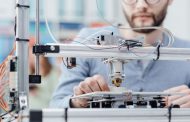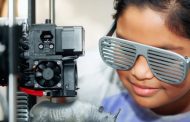Last week we took a look at how Lamborghini is using forged composite carbon fiber in car production. But forged composites aren’t the only game in town when it comes to cutting edge materials. Divergent 3D has been working on additive manufacturing—3D printing to you and me—car parts. In recent weeks, the company signed a partnership with PSA Group (Peugeot and Citroën). Today, Divergent 3D formed a partnership with engineering firm Altran. The company is now working on developing the technology to allow OEMs to manufacture components—in volume—with much lower capital costs and energy use than the conventional method.
Currently, car components are made in much the same way they have been for decades. Metal parts are stamped out by gigantic presses that are both horrifically expensive and energy intensive. Divergent 3D’s founder and CEO, Kevin Czinger, found this out first hand when he co-founded an earlier company that built electric vehicles. He told Ars: “I learned that what slows down advances in the auto industry is hard-metal tooling and stamping. You need hundreds of millions of dollars up front for hardware design and construction, which needs to be amortized, and changes to that hardware become prohibitively expensive.”
Divergent 3D’s technology uses direct-metal laser sintering. Layers of aluminum alloy powder are built up to create the necessary parts or to build molds for non-metallic components. And because complex shapes can be created easily, parts that until now have been made of several pieces that have to be welded together can be created as single pieces.
Right now, Divergent 3D and its partners are working on structural parts and suspension components, but over time “large complex structures like cylinder heads and engine blocks will be 3D printed,” Czinger told us. The goal is to cut the number of parts per vehicle by three-quarters and to reduce the weight of a vehicle’s “body-in-white” by half. And as we all know, the lighter your vehicle, the more fuel efficient it is. According to Czinger, his parts are 10-15 percent lighter than T6 aluminum, but with the same stiffness.
Czinger told us that a factory of 16 3D printers—at about $1 million each—would be sufficient to produce about 10,000 vehicles a year. And design changes are much easier to make, because the tooling is either the 3D printer or parts made by the 3D printer, which can be easily reconfigured once the revised part is designed in silico.





